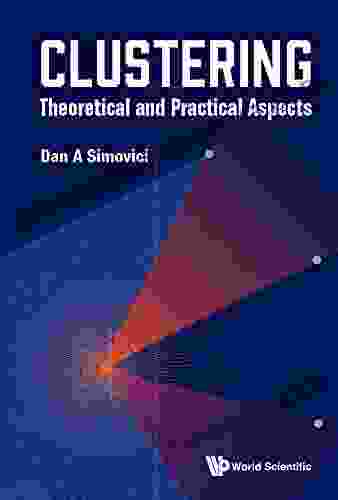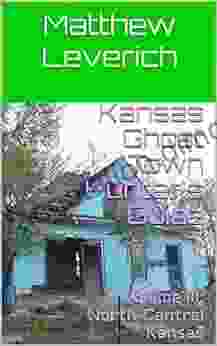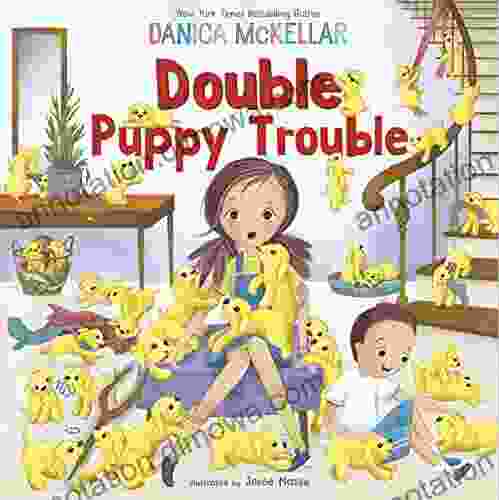Clustering: Unlocking the Secrets of Grouping Data

In the vast ocean of data that surrounds us, clustering emerges as a vital technique for organizing and making sense of complex datasets. It allows us to identify natural groupings within data, revealing hidden patterns and relationships that would otherwise remain concealed. This comprehensive article delves into the theoretical and practical aspects of clustering, providing a thorough understanding of its algorithms, applications, and real-world implications.
Theoretical Foundations of Clustering
Clustering algorithms aim to partition a dataset into distinct groups or clusters, such that data points within a cluster share similar characteristics while differing from those in other clusters. The theoretical underpinnings of clustering lie in the principles of similarity and distance measures.
4.4 out of 5
| Language | : | English |
| File size | : | 51636 KB |
| Text-to-Speech | : | Enabled |
| Enhanced typesetting | : | Enabled |
| Print length | : | 1141 pages |
| Screen Reader | : | Supported |
Similarity and Distance Measures
The effectiveness of clustering algorithms hinges upon the appropriate choice of similarity and distance measures. Similarity measures quantify the degree of resemblance between data points, while distance measures assess the dissimilarity. Common similarity measures include cosine similarity, Euclidean distance, and Jaccard index.
Clustering Algorithms
A plethora of clustering algorithms exist, each employing a unique approach to group data points. Popular algorithms include:
- K-Means: Partitions data into k predefined clusters based on the Euclidean distance between data points and cluster centroids.
- Hierarchical Clustering: Constructs a hierarchical tree-like structure, progressively merging or splitting clusters based on similarity or distance.
- Density-Based Spatial Clustering of Applications with Noise (DBSCAN): Identifies clusters based on the density of data points in a given neighborhood.
- Gaussian Mixture Models (GMMs): Assumes that data is generated from a mixture of Gaussian distributions, with each Gaussian representing a cluster.
Practical Applications of Clustering
Clustering finds widespread applications across diverse domains, including:
Market Segmentation
Clustering can identify distinct customer segments based on their demographics, preferences, and behaviors. This enables businesses to tailor marketing strategies to specific target groups.
Image Recognition
Clustering algorithms are employed to group pixels in an image based on their color, texture, and shape. This facilitates object recognition and image segmentation.
Fraud Detection
Clustering can detect fraudulent transactions by identifying anomalous patterns in financial data. It groups transactions based on similarities in transaction amounts, account numbers, or spending habits.
Medical Diagnosis
Clustering aids in diagnosing medical conditions by grouping patients with similar symptoms, medical history, and test results. This helps identify commonalities and patterns that may assist in early detection and treatment.
Real-World Examples of Clustering
Let's explore a few real-world examples that showcase the power of clustering:
Retail Recommendation Engine
Online retailers utilize clustering to recommend products to customers based on their past Free Downloads and browsing behavior. Customers are grouped into clusters with similar preferences, enabling personalized product recommendations.
Targeted Advertising
Social media platforms employ clustering to target users with relevant advertisements. They group users into clusters based on demographics, interests, and online behavior, ensuring that ads are tailored to specific audiences.
Customer Churn Prediction
Telecommunication companies use clustering to identify customers at risk of churn. By grouping customers with similar usage patterns and payment histories, they can develop targeted retention strategies.
Clustering stands as a powerful technique for unlocking the secrets of grouping data. By understanding its theoretical foundations and practical applications, we gain the ability to extract meaningful insights from complex datasets. Whether it's optimizing marketing campaigns, enhancing image recognition, or diagnosing medical conditions, clustering empowers us with data-driven decision-making and the ability to make informed choices. As the volume and complexity of data continue to grow, clustering will undoubtedly play an increasingly pivotal role in shaping our digital future.
4.4 out of 5
| Language | : | English |
| File size | : | 51636 KB |
| Text-to-Speech | : | Enabled |
| Enhanced typesetting | : | Enabled |
| Print length | : | 1141 pages |
| Screen Reader | : | Supported |
Do you want to contribute by writing guest posts on this blog?
Please contact us and send us a resume of previous articles that you have written.
 Book
Book Novel
Novel Page
Page Chapter
Chapter Text
Text Story
Story Genre
Genre Reader
Reader Library
Library Paperback
Paperback E-book
E-book Magazine
Magazine Newspaper
Newspaper Paragraph
Paragraph Sentence
Sentence Bookmark
Bookmark Shelf
Shelf Glossary
Glossary Bibliography
Bibliography Foreword
Foreword Preface
Preface Synopsis
Synopsis Annotation
Annotation Footnote
Footnote Manuscript
Manuscript Scroll
Scroll Codex
Codex Tome
Tome Bestseller
Bestseller Classics
Classics Library card
Library card Narrative
Narrative Biography
Biography Autobiography
Autobiography Memoir
Memoir Reference
Reference Encyclopedia
Encyclopedia Daniel A Fleisch
Daniel A Fleisch D K Dailey
D K Dailey Daniel Kleppner
Daniel Kleppner Ethem Alpaydin
Ethem Alpaydin Daniel Z Freedman
Daniel Z Freedman Joshua Cutchin
Joshua Cutchin Ross Leondiou
Ross Leondiou David A Crespy
David A Crespy Melanie Schuster
Melanie Schuster Loren Landow
Loren Landow Meghan J Ward
Meghan J Ward Rashmi Sirdeshpande
Rashmi Sirdeshpande Dan Stewart
Dan Stewart Dave Shute
Dave Shute Katherine Holubitsky
Katherine Holubitsky Daniel Coyle
Daniel Coyle Pam Cook
Pam Cook Theta
Theta Patrick Suppes
Patrick Suppes Gillian Jones
Gillian Jones
Light bulbAdvertise smarter! Our strategic ad space ensures maximum exposure. Reserve your spot today!

 Adrien BlairLearn How to Draw Anime Hair: A Step-by-Step Guide for Manga and Character...
Adrien BlairLearn How to Draw Anime Hair: A Step-by-Step Guide for Manga and Character...
 Ryūnosuke AkutagawaMathematics of Relativity: A Detailed Guide to the Mathematics of Einstein's...
Ryūnosuke AkutagawaMathematics of Relativity: A Detailed Guide to the Mathematics of Einstein's... Aldous HuxleyFollow ·17.4k
Aldous HuxleyFollow ·17.4k David PetersonFollow ·4.2k
David PetersonFollow ·4.2k Ivan TurnerFollow ·16.1k
Ivan TurnerFollow ·16.1k Eric NelsonFollow ·11.5k
Eric NelsonFollow ·11.5k Ivan TurgenevFollow ·16k
Ivan TurgenevFollow ·16k Austin FordFollow ·5.2k
Austin FordFollow ·5.2k Josh CarterFollow ·3.4k
Josh CarterFollow ·3.4k Tyrone PowellFollow ·10.6k
Tyrone PowellFollow ·10.6k

 E.E. Cummings
E.E. CummingsAnimals and Sociology: Unraveling the Interwoven Tapestry...
Exploring the Ethical,...

 Glenn Hayes
Glenn HayesCross Academy Valicity Elaine: The Book That Will Change...
What is Cross...

 Nathaniel Hawthorne
Nathaniel HawthorneBioluminescence: A Guiding Light in the Deep Gulf Coast
Enter the enchanting realm of...

 Ethan Gray
Ethan GrayHaunted: The Arnaud Legacy - A Spine-Chilling Gothic...
Step into the...
 Roberto Bolaño
Roberto BolañoThe Extraordinary Tale of the World's Greatest Sailboat...
In the heart of...
4.4 out of 5
| Language | : | English |
| File size | : | 51636 KB |
| Text-to-Speech | : | Enabled |
| Enhanced typesetting | : | Enabled |
| Print length | : | 1141 pages |
| Screen Reader | : | Supported |










